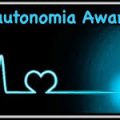Table of Contents
POTS (Postural Orthostatic Tachycardia Syndrome) is a type of Dysautonomia (an umbrella term used to coin many different medical conditions that results to Autonomic Nervous System (ANS) malfunction) estimated to affect around 1M to 3M Americans, and millions more around the globe.
POTS is a type or orthostatic intolerance (OI), which causes different symptoms when standing upright, but relieved when reclining. OI is also associated with excessive tachycardia (abnormal heart rate) and other symptoms that come out when standing.
Criteria for Diagnosis
As for today, the diagnosis used for POTS is sudden increase of heart rate, which is 30 bpm (beats per minute) or more, or above 120 bpm within the first ten minutes of standing upright, without the orthostatic hypotension (low blood pressure when standing, from lying down or sitting). For younger individuals (children and adolescents) the diagnosis standard is at 40 bpm or more.
POTS is usually diagnosed with the use of Tilt Table Test. Some physicians use bedside measurements for both blood pressure and heart rate taken from supine (laying down) position and comparing it to standing up position, with 2, 5 and 10 minutes of intervals. Some doctors may endorse much more detailed tests to fully evaluate the patient’s nervous system in the presence of POTS, such as the QSART (Quantitative Sudomotor Axon Reflex Test) test , TST (Thermoregulatory Sweat Test), gastric motility study, skin biopsies to check the small fiber nerves, etc.
Signs and Symptoms of POTS
POTS symptoms are more complicated than simple heart rate increase. One of the most common symptoms is the drop of blood pressure when standing (hypovolemia) as well as high plasma norepinephrine level while standing, which reflects to the increase of sympathetic nervous system activation.
Research says almost 50% of people with POTS have small fiber neuropathy that affects the sudomotor nerves. Other common symptoms include lightheadedness, headaches, nausea, palpitations, diminished concentration, syncope (fainting), tremulousness (shaking), shortness of breath, coldness, chest pain and pain on extremities. Some patients may also develop reddish purple color in their legs when standing, is believed to be caused by poor blood circulation. The discoloration will subside when POTS patient returns to reclined position.
Causes of POTS
To clarify, POTS is not a disease as itself, rather, it is a “syndrome” that manifests with multiple symptoms. This syndrome is usually caused by underlying medical condition, and this condition may differ from one patient to another. That is why it has different causes as well.
Up until now, researchers are yet to identify the pathology and root cause of POTS. There are however, lots of underlying diseases and conditions that are associated with this syndrome or causes POTS symptoms. The list includes:
- Anemia
- Vitamin deficiency
- Genetic abnormalities or disorder
- Diabetes or pre-diabetes
- Autoimmune diseases such as lupus, autoimmune autonomic gaglionopathy, Sjogren’s syndrome, etc.
- Multiple sclerosis
- Infections such as Lyme disease, Hepatitis C, Epstein Barr virus, Muonucleosis, pneumonia, etc.
- Toxicity caused by heavy metal poisoning, chemotherapy, and alcoholism
- Vaccinations
- Surgery, trauma or pregnancy
- Etc.






 I love to write medical education books. My books are written for everyone in an easy to read and understandable style.
I love to write medical education books. My books are written for everyone in an easy to read and understandable style.